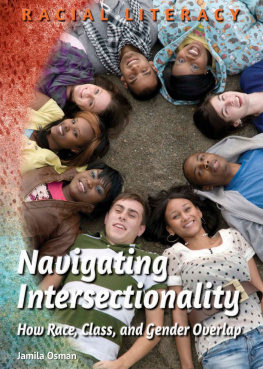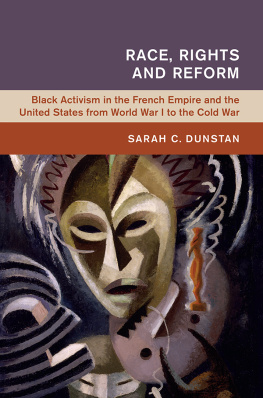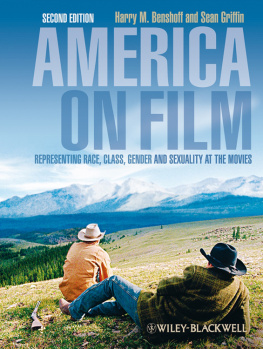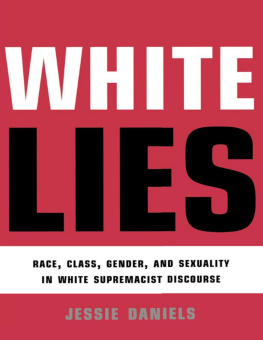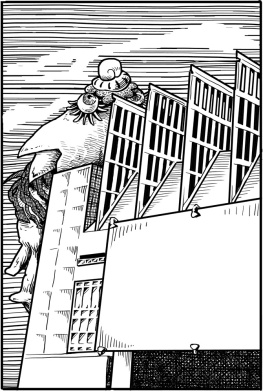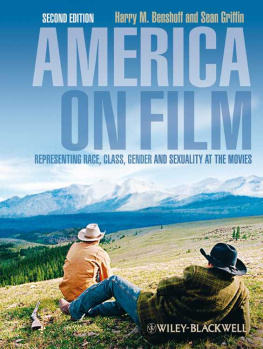Gender, Class, Race,
and Reform in the
Progressive Era
Gender, Class, Race,
and Reform in the
Progressive Era
NORALEE FRANKEL
NANCY S. DYE
Editors
Copyright 1991 by The University Press of Kentucky
Scholarly publisher for the Commonwealth,
serving Bellarmine University, Berea College, Centre
College of Kentucky, Eastern Kentucky University,
The Filson Historical Society, Georgetown College,
Kentucky Historical Society, Kentucky State University,
Morehead State University, Murray State University,
Northern Kentucky University, Transylvania University,
University of Kentucky, University of Louisville,
and Western Kentucky University.
All rights reserved.
Editorial and Sales Offices: The University Press of Kentucky
663 South Limestone Street, Lexington, Kentucky 40508-4008
www.kentuckypress.com
Cataloging-in-Publication data is available from the Library of Congress
ISBN: 978-0-8131-0841-4 (pbk. : alk. paper)
This book is printed on acid-free recycled paper meeting
the requirements of the American National Standard
for Permanence in Paper for Printed Library Materials.
Manufactured in the United States of America.
| Member of the Association of
American University Presses |
Contents
Nancy S. Dye
Jacqueline A. Rouse
Nancy A. Hewitt
Sharon Harley
Ardis Cameron
Eileen Boris
Alice Kessler-Harris
Molly Ladd-Taylor
Barbara Sicherman
Rosalyn Terborg-Penn
Ellen Carol DuBois
Susan Tank Lesser
Preface
The essays in this volume were originally delivered as papers at the Conference on Women in the Progressive Era held March 10-12, 1988, at the National Museum of American History, Smithsonian Institution, Washington, D.C.
This conference was sponsored by the American Historical Association and the National Museum of American History, with financial assistance from the Division of Research Programs of the National Endowment for the Humanities, the Rockefeller Foundation, the Quaker Hill Foundation, and the Smithsonian Institutions Office of Fellowships and Grants.
William Chafe, Nancy S. Dye, Noralee Frankel, Alice Kessler-Harris, Susan Tank Lesser, Edith P. Mayo, Karen Offen, and Rosalyn Terborg-Penn served as members of the conferences program committee. Roger Kennedy, director, and the staff of the National Museum of American History generously shared the museums facilities. Edith P. Mayo and Mary Grassick capably coordinated the conference arrangements at the Museum of American History. Rosemary Wozniak and Debbie Wozniak provided invaluable assistance in preparing this manuscript, and Maureen Vincent-Morgan edited the manuscript.
1
Introduction
NANCY S. DYE
The movement called progressivism flourished in the years between the depression of 1893 and the United States entry into World War I, as Americans struggled to come to terms with the profound dislocations wrought by massive industrialization, the rise of the corporation, and rapid urban growth. A complex, sometimes contradictory amalgam of social ctiticism, popular protest, political restructuring, economic regulation, and social welfare legislation, progressive reform embodied a vast array of responses to the changes taking place in American society at the turn of the twentieth century.
Women filled the progressive landscape. Throughout the 1890s, when progressivism consisted in good measure of widespread popular outcry against new corporate order, many women joined in boycotts against local traction company and utilities magnates and in protesting corporate arrogance and political corruption. In towns and cities throughout the nation, women formed their own civic clubs and municipal improvement associations. Pointing to their communities needs for municipal housekeeping and invoking their maternal duties to protect children and care for the poor, women organized around local issues: the improvement of working conditions, especially for women and child wage earners; maternal and child welfare; clean water; pure food and milk; adequate sanitation; the creation of playgrounds, recreation centers, and parks; and improved housing and schools. Through their clubs and civic organizations, middle-class women explored local social and economic conditions and compiled extensive documentation of the dimensions of poverty in the United States and the specific impact of industralization on American communities.
Women also entered politics. Although largely disfranchised except in school elections, women played active and highly visible roles in municipal and state politics. They claimed credit for a variety of progressive victories: electing women to local school boards; winning appointments for women as sanitation, health, and factory inspectors; marshalling votes for new city charters and for bond issues to fund municipal improvements; helping to oust corrupt officials; and organizing to win the passage of housing, labor, corrections, and health legislation. That settlement houses flourished in American cities in the decades around the turn of the century was also the result of womens initiative and organization. In these womens communities, residents explored new alternatives for meaningful work and social service and pioneered new approaches to understanding the causes and ameliorating the conditions of poverty. Womens grass-roots activisim and their vision of a new civic consciousness lay at the heart of early progressive reform.
By the twentieth centurys second decade, the initial local emphasis of progressivism had given way to a national focus. Womens clubs, settlement leaders, and womens organizations such as the Consumers League and Womens Trade Union League forged a national political network and a coherent legislative agenda. After 1910, women turned increasingly to the government, especially at the federal level, to implement their reforms. In doing so, women envisioned a new, humane state, identified with the values of the home rather than those of the marketplace, with expanded powers to protect its powerless and dependent constituencies. This national womens network was instrumental in creating and supporting the federal Childrens Bureau in the United States Department of Labor and in enacting an array of social legislation. Most of the laws that comprised womens legislative agenda were measures intended to improve the lives of women and children: minimum wage and maximum hours statutes, mothers pensions, juvenile justice codes, the prohibition of child labor and industrial homework, and compulsory school attendance. The body of state and federal legislation for which women progressive reformers worked provided much of the foundation for American welfare legislation for the remainder of the twentieth century.







